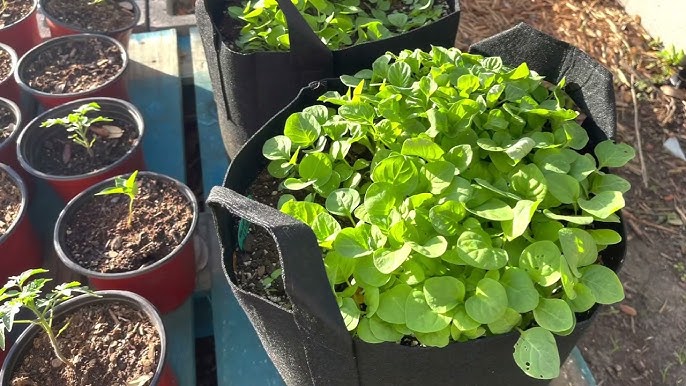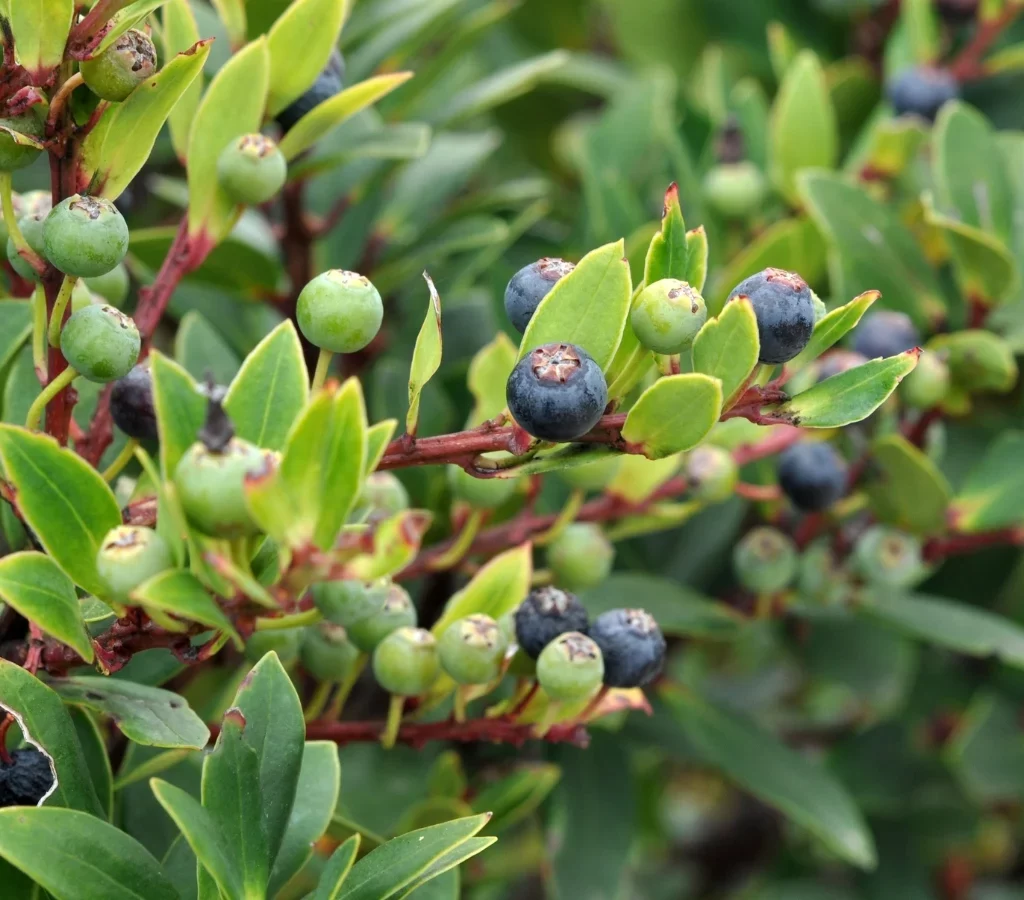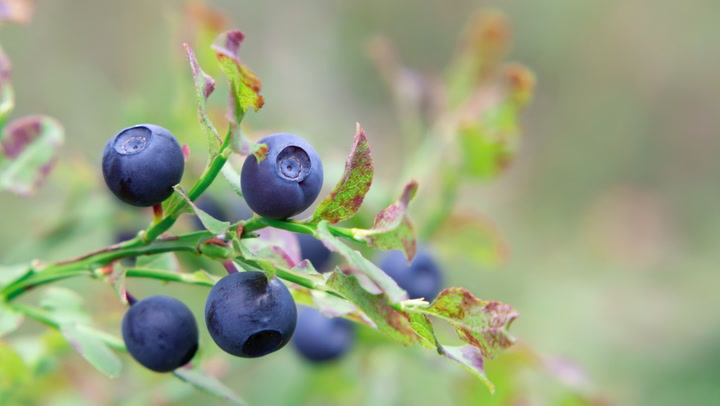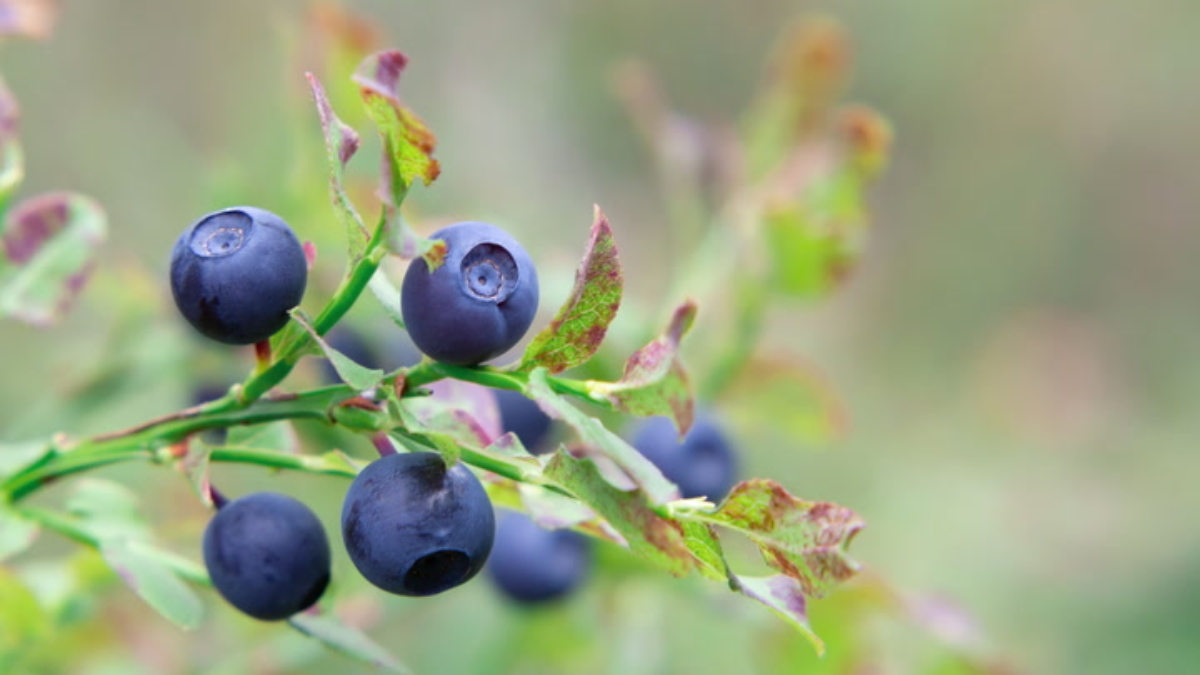If you’re a lover of berries and rustic garden spaces, huckleberries should be at the top of your planting list. These flavorful, antioxidant-rich berries have long been cherished in North America, especially in forested and mountainous regions. Growing huckleberries in a wild garden setting not only adds a delicious, native plant to your landscape but also nurtures pollinators and wildlife.
In this detailed guide, we’ll walk you through how to grow huckleberries in the wild garden, from choosing the right species to planting, care, harvesting, and even troubleshooting common problems.

What Are Huckleberries?
Huckleberries belong to the Ericaceae family, the same family as blueberries, and are primarily native to the United States and Canada. While often confused with blueberries, huckleberries are distinct in flavor, texture, and habitat preference.
They thrive in wild, acidic soils and offer berries ranging in color from bright red to deep purple-black depending on the variety.
Notable characteristics:
- Small to medium-sized shrubs.
- Produces sweet-tart berries ideal for jams, pies, syrups, and fresh eating.
- Excellent for native and wild-style gardens.
- Attracts bees, birds, and butterflies.
Best Huckleberry Varieties for Wild Gardens
Several huckleberry species can be cultivated, but a few stand out for home gardeners and wild landscapes:
Top Huckleberry Types:
- Vaccinium membranaceum (Mountain Huckleberry):
Found in mountainous regions of the Pacific Northwest. Produces dark purple, sweet-tart berries. - Vaccinium ovatum (Evergreen Huckleberry):
Native to coastal areas. Grows well in shade and produces small, glossy berries. - Gaylussacia baccata (Black Huckleberry):
Native to the eastern U.S., thriving in woodlands and sandy soils. Sweet, flavorful berries. - Vaccinium parvifolium (Red Huckleberry):
Prefers acidic, moist soils in shaded areas. Produces bright red, tangy berries.

Ideal Conditions for Growing Huckleberries
Huckleberries naturally thrive in wild, acidic, and well-drained soil environments. To replicate this in your garden, keep the following conditions in mind:
Light Requirements
Most huckleberries prefer partial shade to full sun. Mountain huckleberries and black huckleberries do well in full sun, while evergreen and red huckleberries appreciate dappled light or partial shade.
Temperature
They prefer cool, temperate climates with cold winters and mild summers. Ideal for USDA zones 4–8 depending on the variety.
Soil Preferences
The key to healthy huckleberry growth is acidic, well-drained soil with a pH of 4.5 to 5.5.
Tips for preparing soil:
- Incorporate peat moss, pine needles, or leaf mold to increase acidity.
- Avoid clay-heavy, alkaline soils unless heavily amended.
- Ensure excellent drainage to prevent root rot.
How to Plant Huckleberries in a Wild Garden
Best Planting Time
Plant huckleberries in early spring or fall, when temperatures are mild and moisture is abundant.
Planting Steps:
- Select a Location: Choose a spot that mimics their natural habitat — partial shade with acidic, well-draining soil.
- Test and Amend Soil: Use a soil test kit to check pH. Lower it using soil acidifiers like sulfur or organic materials if needed.
- Dig Planting Holes: Holes should be twice the width of the root ball and the same depth.
- Set Plants in Soil: Place the plant so that the top of the root ball is level with the ground surface.
- Backfill and Water: Fill in with soil, gently tamp down, and water deeply.
- Mulch Heavily: Apply a 2–3 inch layer of pine needles or wood chips to retain moisture and improve soil acidity.

Caring for Huckleberries
Once planted, huckleberries are fairly low-maintenance, especially when planted in a wild garden setting.
Watering
While drought-tolerant once established, young huckleberry plants need consistent moisture. Water deeply once or twice a week during dry spells.
Avoid waterlogged soil, as these plants hate standing water.
Fertilizing
Huckleberries don’t require heavy fertilizing. Use a balanced, acid-loving plant fertilizer (like one for azaleas or rhododendrons) in early spring and again in mid-summer.
Pruning
Pruning is minimal. Remove:
- Dead or damaged wood in late winter.
- Older, unproductive branches after fruiting to encourage new growth.
This maintains the plant’s shape and vigor.
Pollination
Huckleberries are pollinated by bees, butterflies, and other native pollinators. Planting multiple shrubs together encourages cross-pollination and boosts berry yields.
Harvesting Huckleberries
Depending on the variety and region, huckleberries typically ripen from mid to late summer.
Signs they’re ready to harvest:
- Fully colored, dark purple, black, or red (depending on type).
- Easily detach when gently tugged.
- Juicy and sweet-tart flavor.
Harvesting Tips:
- Use your hands or berry combs for picking.
- Harvest in the morning for best freshness.
- Store berries in a cool place or freeze for long-term use.

Common Problems and Solutions
Though hardy, huckleberries can face a few challenges:
Leaf Yellowing
Cause: Poor soil drainage or alkaline soil.
Solution: Improve drainage and lower soil pH with acidifying materials.
Pests
While generally pest-resistant, watch for:
- Aphids: Control with insecticidal soap or neem oil.
- Birds: Protect ripening berries with bird netting.
Fungal Issues
In overly wet, poorly drained soils, root rot and mildew can occur. Avoid overwatering and ensure good air circulation.
How to Propagate Huckleberries
Huckleberries can be propagated from:
- Seed: Slow, requires stratification (cold exposure) for 2–3 months.
- Cuttings: Take 6-inch semi-hardwood cuttings in summer.
- Suckers: Separate and transplant young shoots from established plants.
Propagation by cuttings or suckers is faster and more reliable for home gardeners.

Companion Planting Ideas
In a wild garden, huckleberries pair beautifully with other native and woodland plants:
- Ferns
- Salal
- Rhododendrons
- Azaleas
- Wild blueberries
- Elderberries
These companions share similar soil and moisture preferences, creating a harmonious and ecologically beneficial planting.
Final Thoughts
Growing huckleberries in a wild garden is a deeply rewarding project for nature lovers and home gardeners alike. These native shrubs not only provide delicious, antioxidant-packed berries but also enhance the biodiversity and natural charm of your outdoor space.
With a little attention to soil acidity, water, and shade, your huckleberry patch can thrive for years — offering a steady harvest and an inviting haven for pollinators and wildlife.
So if you’re dreaming of foraging in your own backyard, plant a few huckleberries this season and watch your wild garden flourish.
FAQs
Q: Are huckleberries easy to grow in home gardens?
A: Yes — as long as you can replicate their preferred acidic, well-drained soil and partial shade conditions.
Q: How long do huckleberry bushes take to fruit?
A: Typically 2–4 years after planting, depending on the age of the plant and growing conditions.
Q: Can I grow huckleberries in containers?
A: Yes, especially dwarf or evergreen varieties, provided the container is large, acidic soil is used, and proper drainage is maintained.
Q: Are huckleberries invasive?
A: No — they spread moderately through suckers but are not considered invasive in their native regions.






Leave A Comment